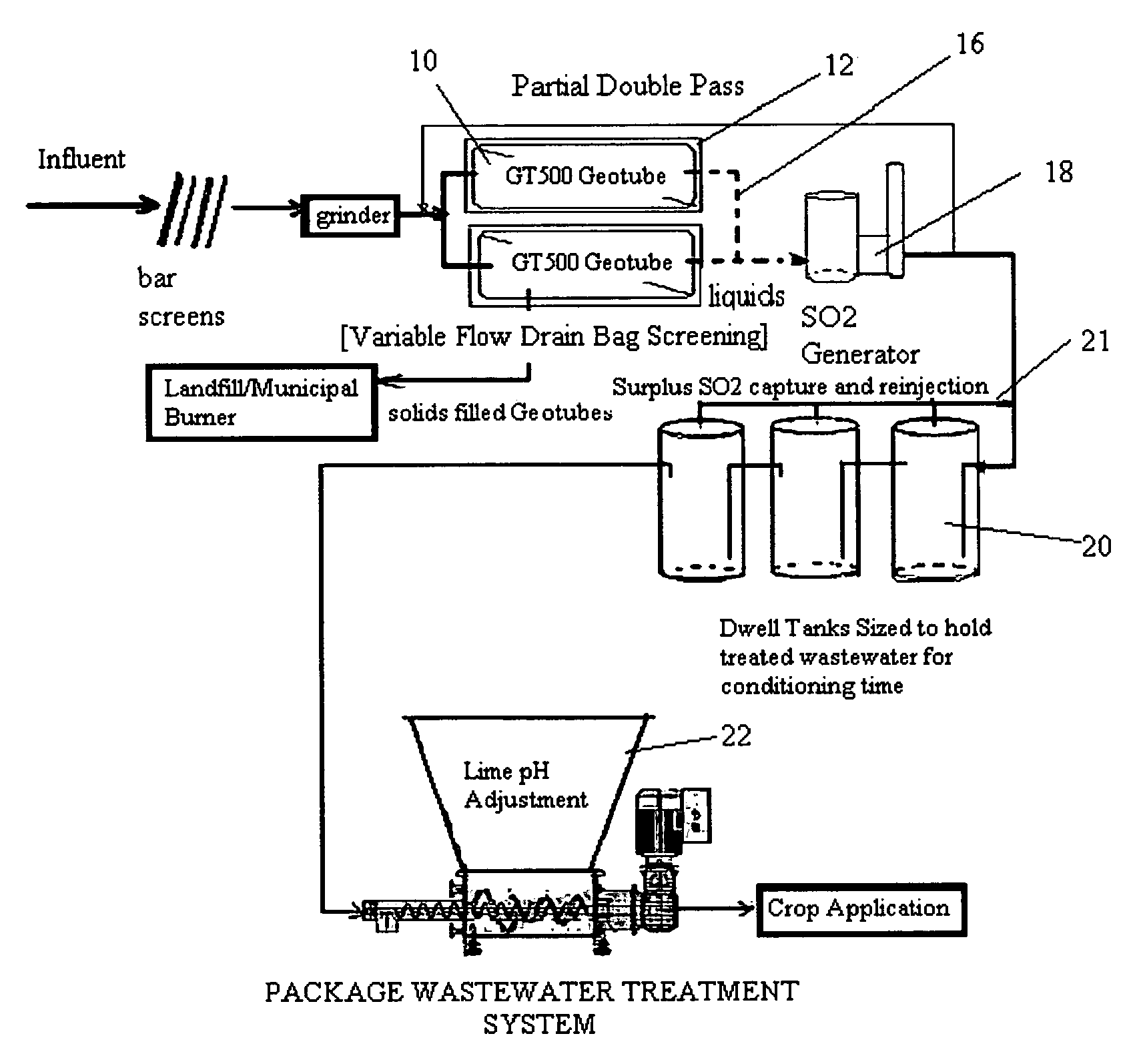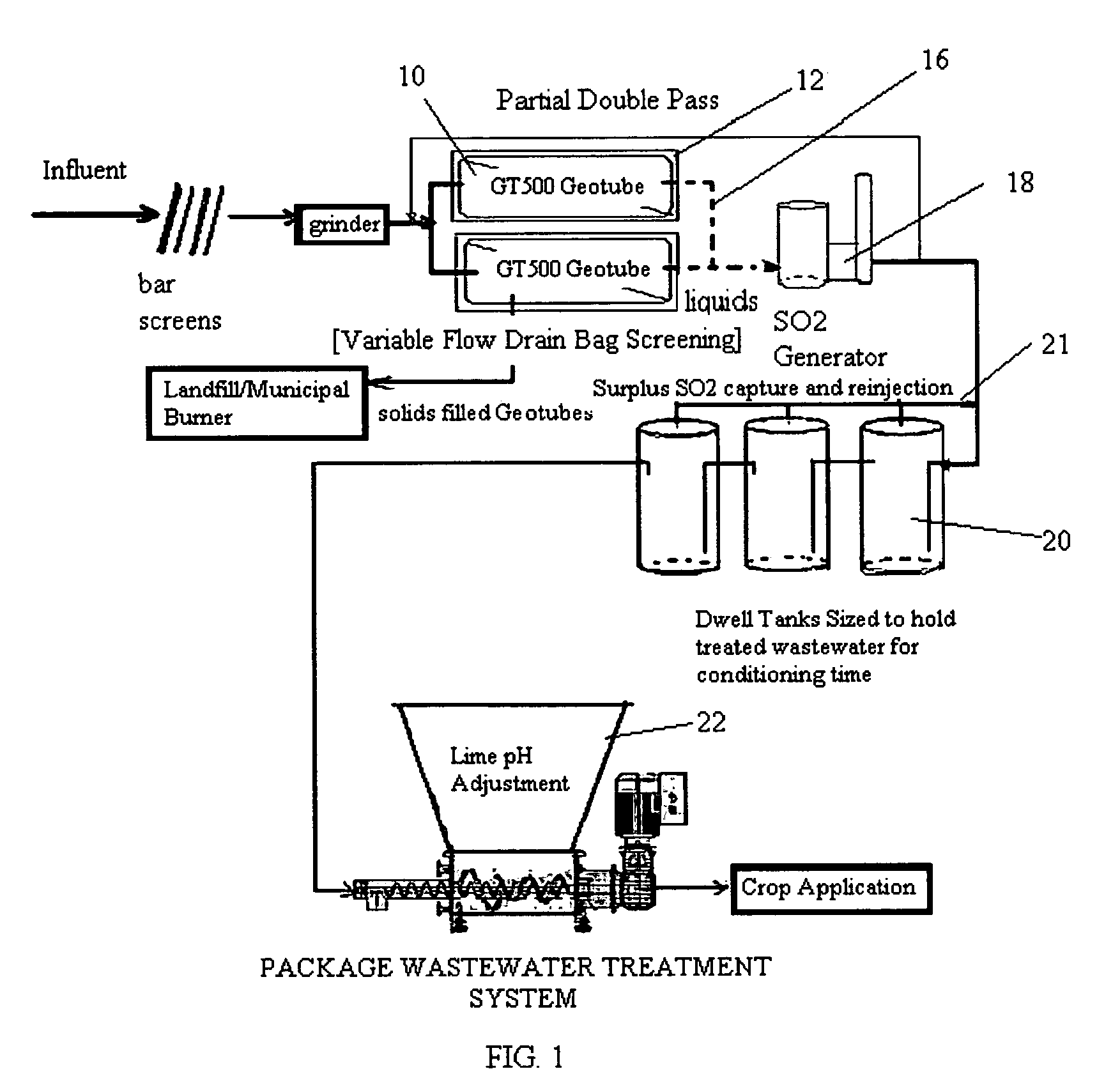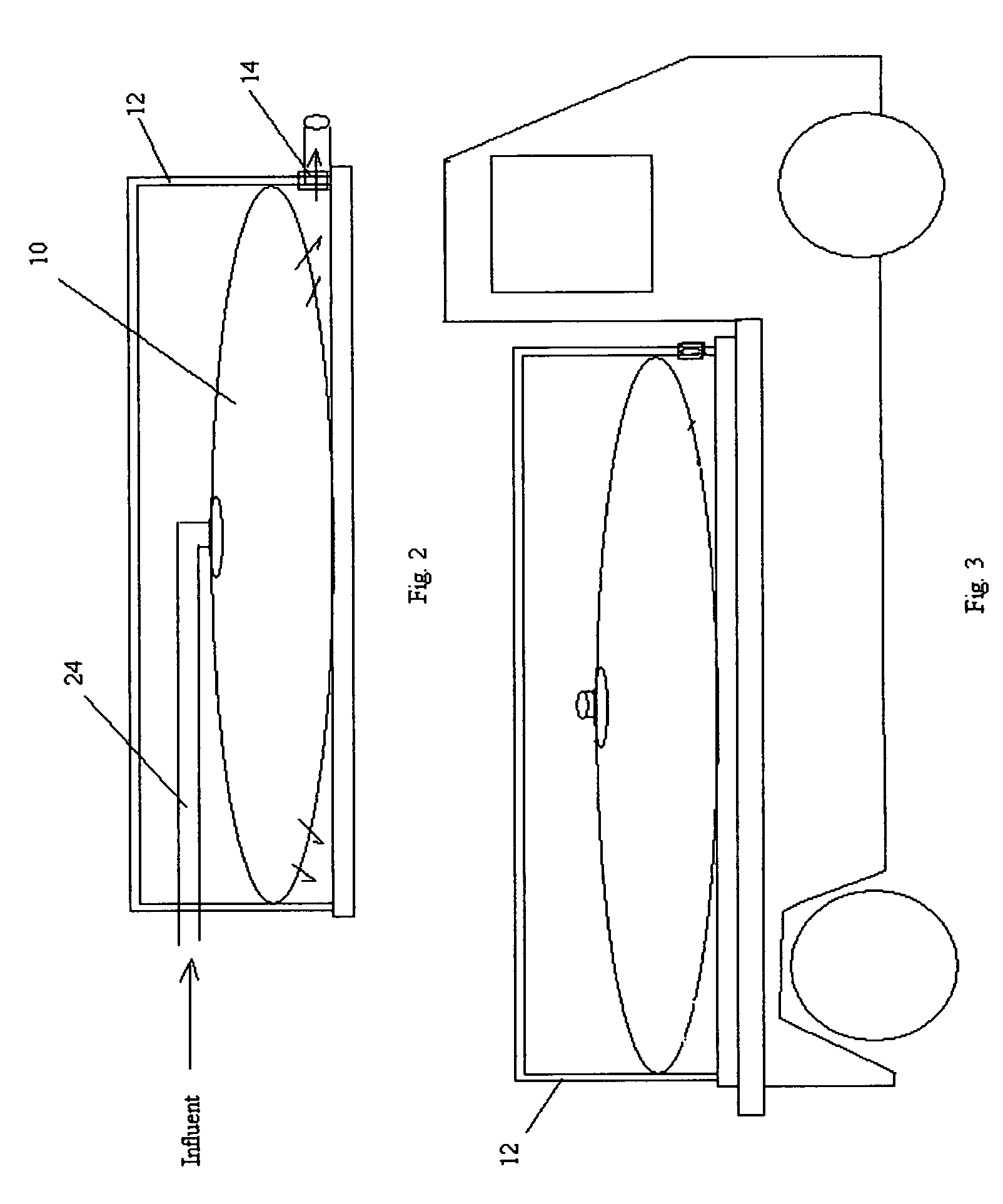Package wastewater chemical/biological treatment method
a wastewater chemical and biological treatment technology, applied in water/sewage multi-stage treatment, water/sewage treatment by degassing, sludge treatment by oxidation, etc., can solve the problem of unfit material for any beneficial use, unsuitable sludge or biosolids arising from industrial discharges, and limit the application of semi-liquid materials to nearby farmland , to achieve the effect of reducing ph, saving additional treatment water, and preventing harmful operator exposur
- Summary
- Abstract
- Description
- Claims
- Application Information
AI Technical Summary
Benefits of technology
Problems solved by technology
Method used
Image
Examples
Embodiment Construction
[0070]An embodiment of the method and apparatus of the present invention is shown in FIG. 1. It comprises taking the screened and ground wastewater influent and passing it through a series of GT 500 Geotubes 10 for further screening and collection of the solids. The Geotubes 10 are placed in roll-off containers 12, which have drain ports 14 shown in FIG. 2. The GT 500 Geotube 10 has odor containment properties, and allows variable wastewater flows to pass through for collection in the containers 12, while retaining the courser solids. Piping 16 associated with the drain ports 14 collects the filtered wastewater and passes it through a sulfur generator 18 for acidification. Because the courser solids are removed, the sulfur generator 18 will not plug. The sulfur generator 18 includes variable controls to add more or less sulfur dioxide to the filtered wastewaters as the flows increase or decrease so that a fairly constant acidic composition is maintained. To insure disinfection, prom...
PUM
 Login to View More
Login to View More Abstract
Description
Claims
Application Information
 Login to View More
Login to View More - R&D
- Intellectual Property
- Life Sciences
- Materials
- Tech Scout
- Unparalleled Data Quality
- Higher Quality Content
- 60% Fewer Hallucinations
Browse by: Latest US Patents, China's latest patents, Technical Efficacy Thesaurus, Application Domain, Technology Topic, Popular Technical Reports.
© 2025 PatSnap. All rights reserved.Legal|Privacy policy|Modern Slavery Act Transparency Statement|Sitemap|About US| Contact US: help@patsnap.com



